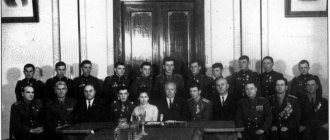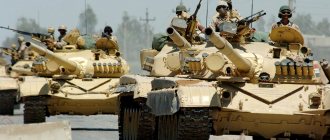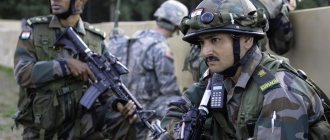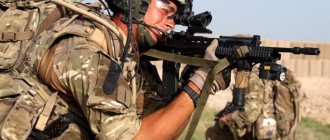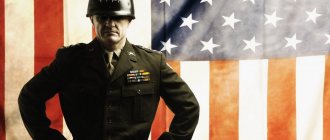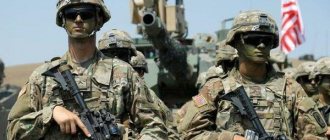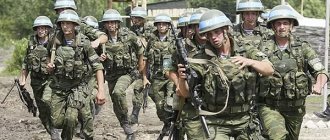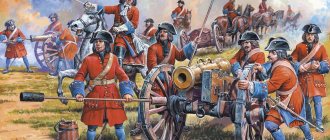Author: Bridge
12 October 2022 00:16
Community: Military
Tags: USA Assault on Kiska Island by the army
2165
7
The number of Allied casualties in this, one of the most inglorious operations of the US Army in World War II, varies and may actually have been much higher than officially reported. Modern historians, when analyzing the Pacific Operation Cottage, are most often forced to rely on data from American sources, and this significantly narrows the breadth of perception of the topic.
0
See all photos in the gallery
Occupation of the Aleutian Islands
But the American army also has tragicomic pages of history that overseas they try not to remember again. It is precisely such cases that the operation code-named “Cottage” refers to.
In June 1942, the Japanese group captured the islands of Kiska and Attu, part of the Aleutian Islands group. This strike was considered by the Japanese command as a distraction from the main attack, the target of which was Midway Atoll. There were no garrisons on the islands, so the capture was carried out without interference. An American weather station was located on Kiska Island. Two of its employees were killed and 8 more were captured.
Article on the topic
"It's nothing you can do". How Japanese Americans “responsed” for Pearl Harbor
The operation to liberate the islands began in the spring of 1943. In the Battle of Attu, almost the entire Japanese garrison of 3,000 people died, with the exception of 28 Japanese captured. American losses amounted to 549 people killed and 1,148 wounded, in addition, about 2,100 people were non-combat losses, mainly from hypothermia and frostbite due to uniforms unsuitable for the climate.
The battle for Kiska, according to the American command, should have become no less bloody. According to intelligence, there were about 10,000 Japanese troops on the island.
Midway. The true story of the carnage in the Pacific Read more
Kiska - volcano
Kiska Island, like all other parts of the Aleutian chain, is of volcanic origin. It is part of a group of islands with an interesting name - Rat Islands. When Fyodor Petrovich Litke found himself on the island in 1827, while traveling around the world, he came up with such a unique name for it. This is because at every step he came across small animals that looked like rats. There is a version that this was a type of gopher that lived in those parts at that time. The Rat Islands consist of several uninhabited rocky individual parts. There are no permanent residents, so these places are considered uninhabited.
Kiska is also a rocky island with steep shores, the main part of which is occupied by the volcano of the same name with a height of 1229.4 meters. The last time an eruption occurred was in 1964. It is located on the northern part of the island of Kiska, USA, and is, as it were, separated from the main territory by a narrow isthmus. Three lakes formed nearby: Western, Christina and Eastern.
Kiska Volcano is considered a stratovolcano, or layered. A feature of this type is the explosive nature of the eruption, in which the lava has a dense structure and hardens before it has time to cover large areas of the earth's surface. The eruption occurs quickly, and the solidified lava forms a specific layered structure of the volcano on the island of Kiska. The description of stratovolcanoes is usually the same throughout the world. These are symmetrical mountains with a wide base, with steeper slopes near the crater. During an eruption, magma almost does not flow down the slopes, but tightly clogs the crater. Pyroclastic flows of hot material and clouds of ash and gas descend down the sides of the volcano. When such a mudflow hits the snow cover of a mountain, streams of volcanic mud are formed.
"Battle of the Ghosts"
To carry out Operation Cottage, the US command concentrated about 35,000 paratroopers (30,000 Americans and 5,000 Canadians), 100 ships and 236 aircraft. The support base of the American group was the island of Adak, from whose airfield regular raids were carried out on the island. In addition, US Navy ships fired their guns at Kiska.
The landing was immediately preceded by an event later known as the “Battle of the Ghosts.”
On July 23, 1943, a Catalina reconnaissance aircraft spotted seven unknown vessels 200 miles northwest of Attu Island. On July 26, unidentified objects were detected by the radar of the battleship Mississippi. The battleship Idaho and the heavy cruisers Wichita and Portland confirmed that they also saw targets. American ships came out to meet them and opened fire. Observers reported seeing flashes of gunfire and torpedo tracks. A picture of a fierce naval battle was emerging. The battleships fired 518 14-inch shells, and the cruisers fired 487 8-inch shells.
When the targets finally disappeared from the radar, American Admiral Thomas Kinkade ordered reconnaissance to determine what losses the enemy had suffered. Soon the scouts reported: the enemy did not suffer any losses, since he was not in the place where the ships were firing. “No ships, no wreckage, not even a dead whale,” the admiral was told.
Kincaid decided to hush up the embarrassment, attributing the incident to equipment malfunctions and the stressed state of the crews. The main thing is that on the island itself everything goes without a hitch.
Article on the topic
Massacre on the beach. Khmer Rouge vs. US Marines
Accumulation of resistance forces
The Americans accumulated their military potential on the nearest islands. On about. Adakh airfield was built in the shortest possible time, which became the largest in the region. The submarines became active. Thus, the American submarine Triton sank the Japanese destroyer Nenohi in mid-summer, taking the lives of 200 people on board. Three destroyers, which moored the cruiser Tiyoda in the harbor, were also damaged at the same time. The Growler submarine managed to fire three torpedoes that accurately hit the ships. The coastal fog helped.
"Friendly Fire"
On August 15, 1943, American paratroopers landed on the western coast of Kiska. On August 16, Canadian troops landed just to the north. They did not face any resistance on the shore, but this did not surprise the Americans, since the Japanese also concentrated their main forces on Attu at commanding heights.
The weather was extremely unfavorable - rain, fog, cold. The paratroopers, who were in constant tension, were waiting for the attack, and soon it happened. A fight ensued. After some time, the participants in the shootout sorted it out - the battle broke out between two detachments of American paratroopers, who in the fog mistook each other for the Japanese. Then the Canadians came under “friendly fire” in a similar manner. Shootings of varying intensity broke out here and there, but every time it turned out that their own people were shooting at their own people.
On August 17, the paratroopers reached Gertrude Bay, where, according to intelligence data, the main Japanese military camp was located. There the Americans were finally met by an enemy, albeit a rather friendly one - local dogs fed by the Japanese. The dogs did not want to die heroically, but instead began to beg food from the paratroopers.
General LeMay's Firestorm. How American aviation burned Tokyo Read more
The beginning of the fightback
At first, the first bombing did not have much impact on the Japanese command. However, the invaders still decided to strengthen their defense and dig in well, but the military was faced with a number of unsolvable problems. The island's harbor was in fog all the time, and the constant dead swell also created big problems. The Japanese only had seaplanes, which carried light weapons and had no armor at all. They could not compete with heavy American bombers.
Enemy floating bases were hesitant to remain permanently close to the coastline due to constant attacks by Allied aircraft. The Japanese kept them on the open sea and only brought them closer to the island under the cover of darkness or in bad weather in order to unload equipment or seaplanes. The Japanese aircraft carriers located off the coast of the Aleutian Islands at the beginning of the operation left their location a month later.
“Unfortunately, dogs couldn’t read.”
But where did the Japanese go? Firstly, initially there were half as many of them on the island as the scouts reported. But back in July, the Japanese command came to the conclusion that it was impossible to effectively defend Kiska. In connection with this, they decided to evacuate the garrison. On July 28, a group of Japanese ships approached the island under the cover of fog, after which all Japanese soldiers and officers were taken on board. Also in the fog, the Japanese squadron went to the island of Paramushir. For the next three weeks, the Americans besieged and stormed Kiska, where not a single person remained.
American aviation, in addition to bombing, was also given a propaganda task - they had to drop leaflets calling on the Japanese to lay down their arms. One of the pilots later remarked: “We dropped 100,000 leaflets, but unfortunately the dogs on the island couldn’t read.”
Russian expedition
Somewhat later, a Russian ship with industrialists on board called “Saint Kapiton” also reached the above-mentioned island, but the sailors were unable to set foot on the shore, as they were attacked by the Aleuts. After this, the ship could not withstand the test of the storm and was thrown onto an inhospitable shore. Russian industrialists wanted to escape and even tried to set up a camp on the shore, but the attack of the Aleuts prevented them from doing this.
After minor losses, the indigenous people retreated to a neighboring island, leaving the uninvited guests to spend the winter completely alone on the uninhabited island of Kiska. During the winter, the Russians continued to be plagued by misfortunes. 17 passengers on the ship died from starvation and scurvy. Those who remained barely escaped, reaching the shores of their native Kamchatka in the summer on the wreckage of an old ship. After such an unsuccessful expedition, the Russians for a long time did not dare to go to the deserted wild islands in the cold, inhospitable sea. And already in 1867, after Alaska was sold to America, Kiska Island also became part of the United States.
Escape under the cover of fog
Anticipating the enemy's attack on their positions, the Japanese, under the cover of heavy fog, carried out a lightning-fast operation to withdraw troops from the Aleutian Arc. On the afternoon of July 29, at great speed, two cruisers and a dozen destroyers went around Kisku Island from the north side and anchored. It took the Japanese only 45 minutes to board the ship. During this short time, 5,400 soldiers boarded the ships.
Heading to their base, they quickly left their location while there was heavy fog and American aircraft could not take off, while patrol ships were replenishing fuel supplies at that time. At this time, the Japanese calmly and brilliantly carried out an operation to rescue their military, who were safely transported to Paramushir.
Reproaches and disputes
As a result, the Americans, consisting of an army of thousands and 100 ships, not counting aviation, fought with an empty island. At the same time, as a result of the so-called “friendly” fire, several hundred people died. Operation Cottage is considered by some to be a failure. But we must keep in mind that, firstly, the victors are not judged, and secondly, the Japanese fled from such a terrible force, afraid to enter into open battle.
It is also necessary to take into account the harsh conditions of the island of Kiska, described above. Constant thick fog and severe cold caused a lot of trouble for the soldiers forced to conduct operations in such harsh conditions. To this day, the entire island is covered with the remains of destroyed guns, and half-submerged, rusted ships stand in the bays. The island rather resembles an open-air museum that tells people visiting it about the terrible days of the war.
